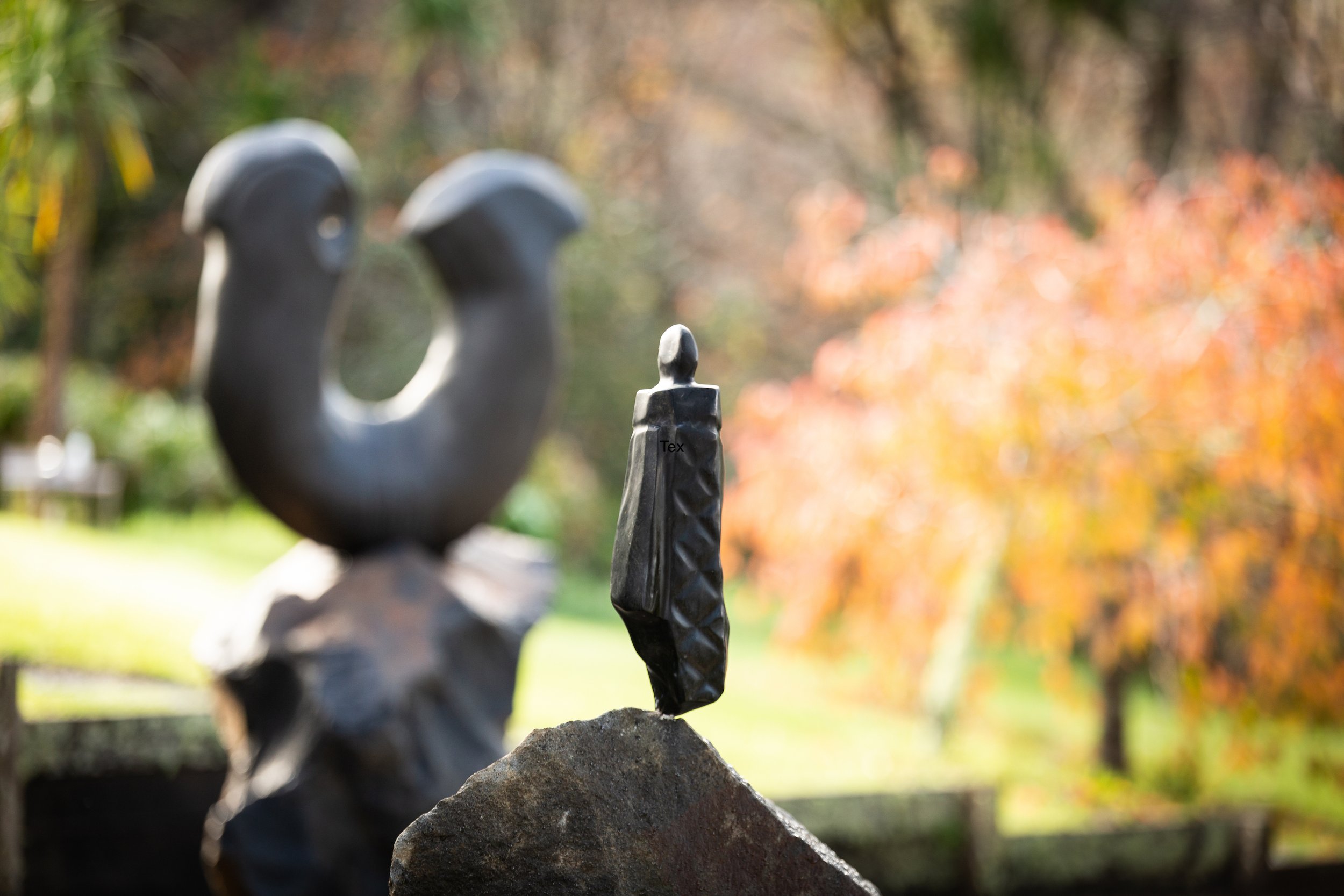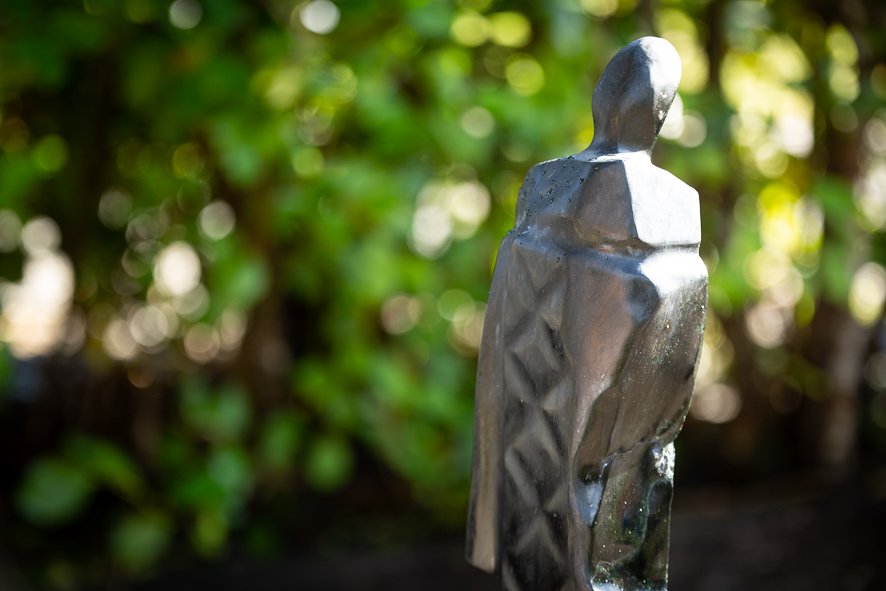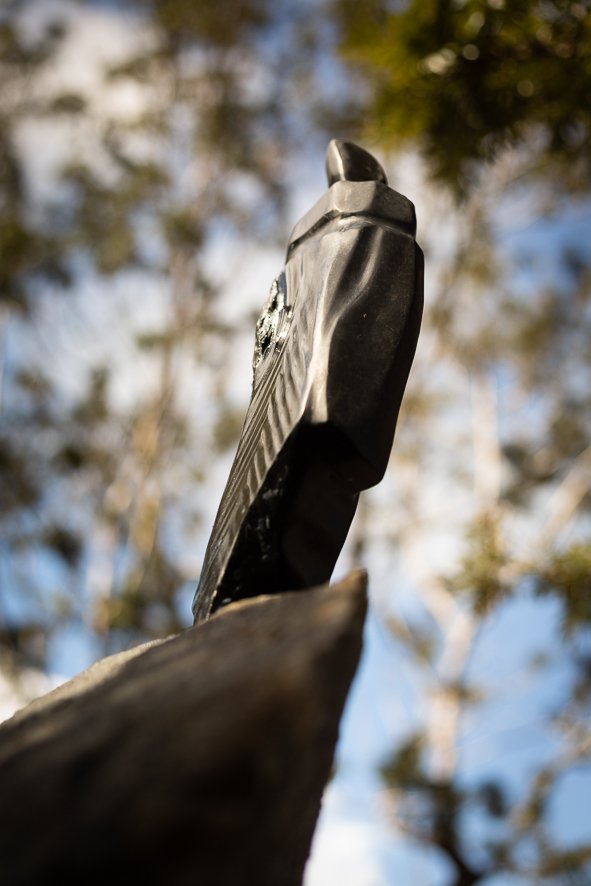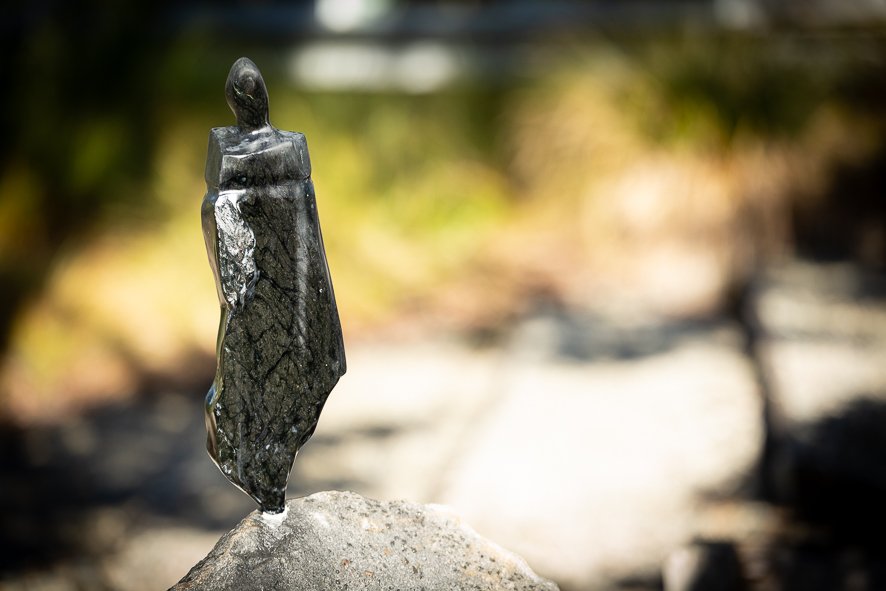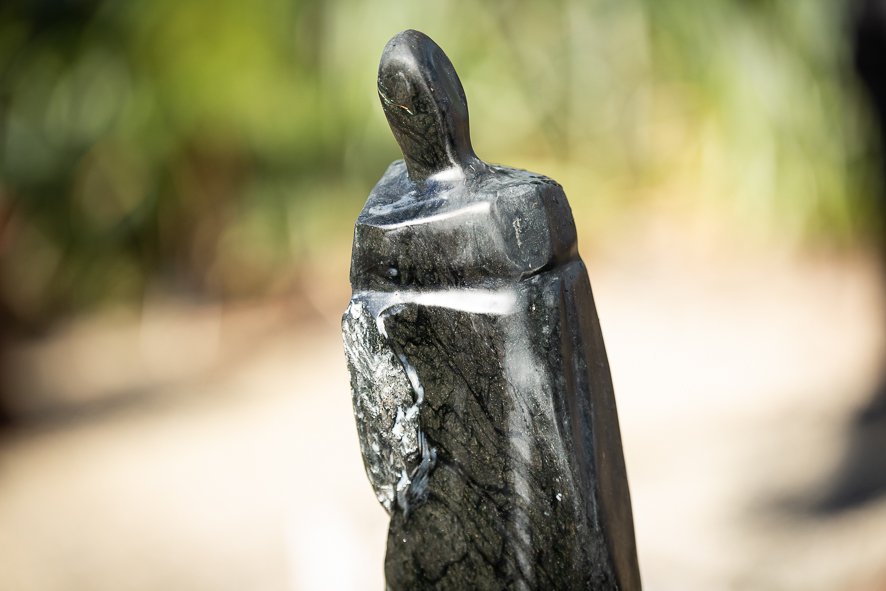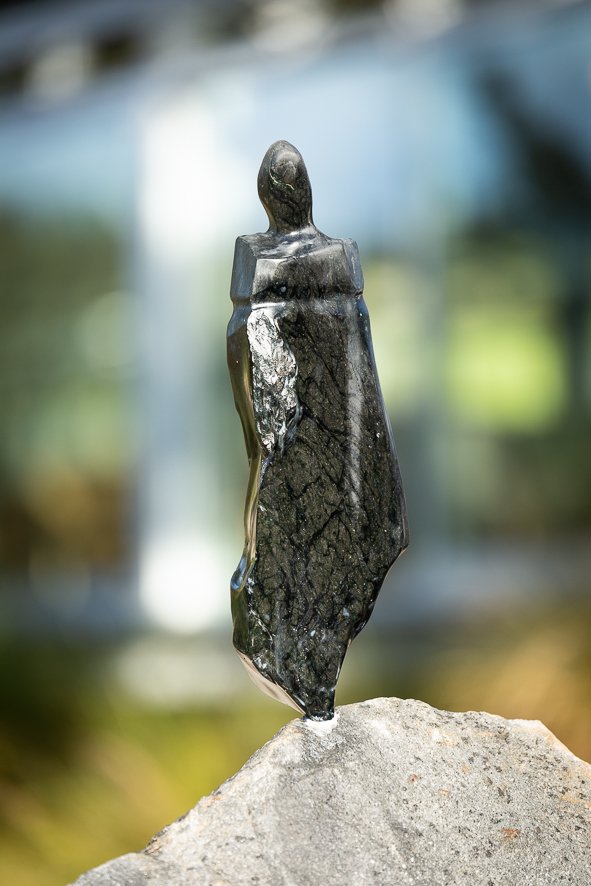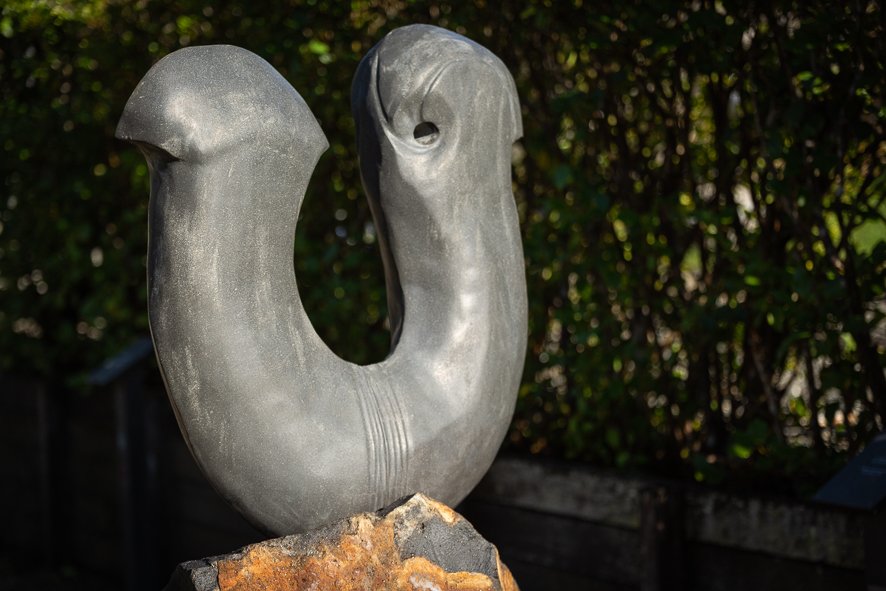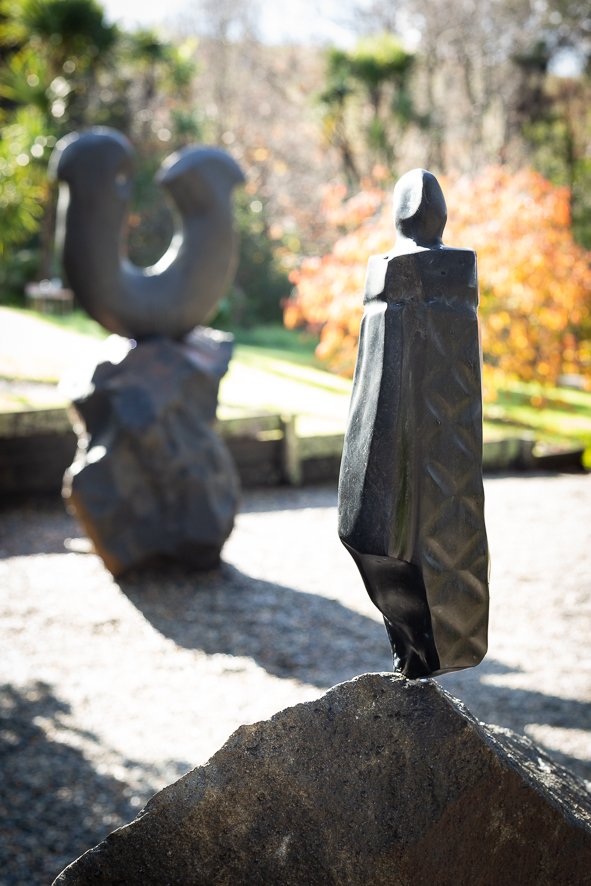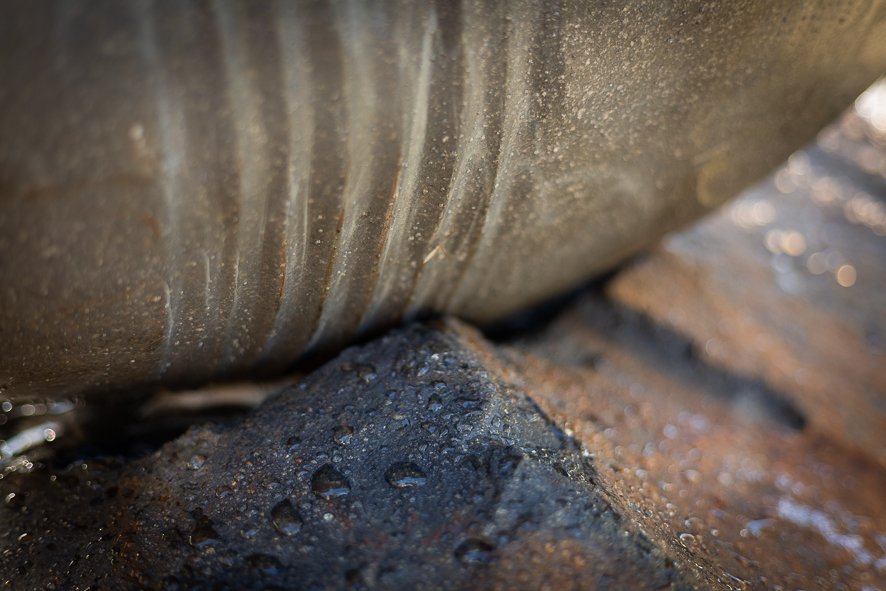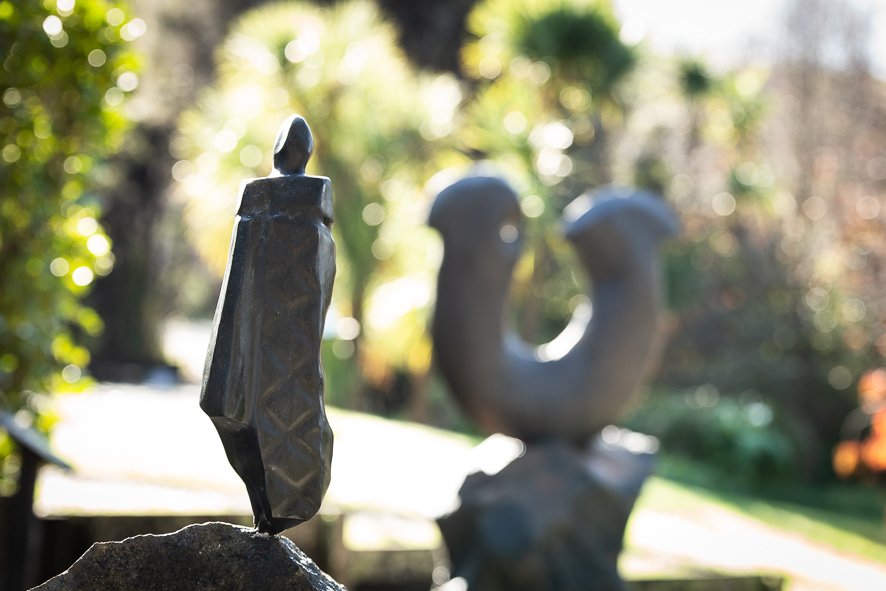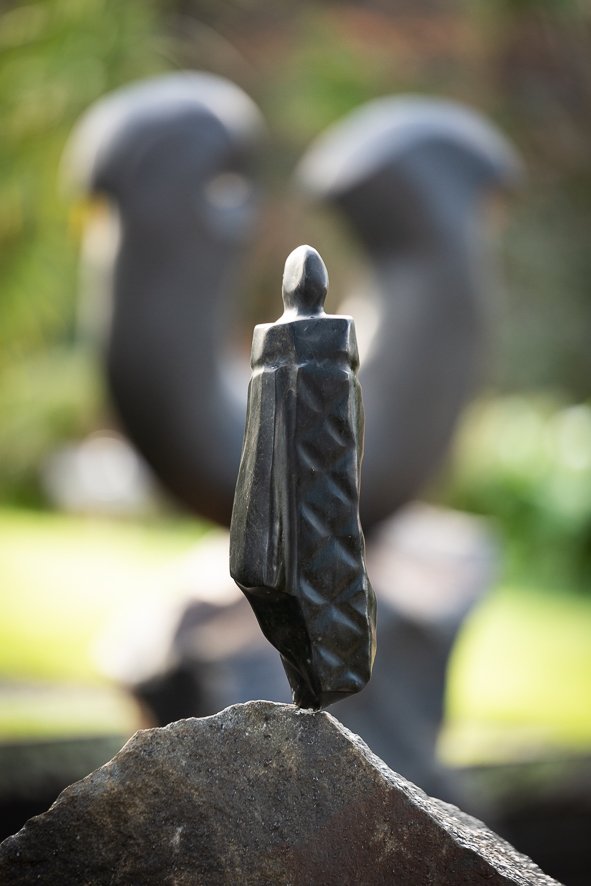Anton forde
Arorangi - Heavenwards, Upwards
Pounamu Uriuri / Black Nephrite from Dorothy Falls, West Coast, on Kōkawa / Andesite base from Maunga Taranaki
1520 x 1020 x 780mm
Price on request
Porotaka - Circular
Kōkawa / Andesite from Maunga Taranaki on Onewa / Basalt base from Owairaka / Mt. Albert
1920 x 1020 x 1120mm
Price on request
“To be a sculptor is also to be a finder and surfacer of forms, over which meaning can be draped like a shawl.”
Amy Stewart, “Old Stone: Looking Through Deep Time in Anton Forde’s Kāmaka,” in Art New Zealand No.185, Autumn 2023.
Anton Forde (Taranaki, Gaeltacht, Gaelic, English) has a deep appreciation for the earth, a boundless curiosity about the subterranean layers below the surface and a fascination for the histories that stone can tell. In this site-specific installation specifically for Brick Bay, Forde’s sculptures Arorangi - Upwards, Heavenwards and Porotaka - Circular continue his exploration of ancient stone-based tools for carving, building, fishing, weaving, weaponry and embellishment.
In Anton’s words, “to create in kāmaka (stone) is an honour, and carving is beautiful, dusty and intense mahi that enables both physical and metaphysical connections between artist and stone. Carving kāmaka connects me as an artist to experiences of the ancient worlds to which I have travelled…and a catalyst for an enduring fascination with ancient themes recorded on land in stone.”
The two kōhatu (stone) sculptures stand independently, but are also in gentle conversation with each other. Both are mounted on impressively large rock bases (Arorangi on Kōkawa/Andesite from Maunga Taranaki; Porotaka on Onewa/Basalt from Owairaka/Mt Albert).
But the carved forms mounted atop these stones differ dramatically from each other. The figure Arorangi has a delicate, ethereal nature, yet maintains a quiet presence of poised power. With a stance that suggests rather than confirms a position, and her face a neutral plane, Arorangi’s gaze has an upward tilt, gesturing towards a higher spiritual realm.
Elegantly carved from pounamu uriuri, the subtle demarcations from Forde’s tooling allow the form to appear fluid, liquid, shining, swirling - demonstrating the wondrous vein of the stone. Arorangi is draped in a kakahu (cloak) adorned with the pattern of puarapura whetū (many stars woven) and also the subtle pattern unaunahi (fish-scale) which was often used when carving the hiwi (hull) of a waka to create a vortex and pull the vessel through the water. This small yet powerful figure therefore holds the skies and the seas within her.
Arorangi gazes across the courtyard at the large form of Porotaka. The title refers to a rounded shape and is inspired by the porotaka hei matau (stylised fishhooks) which were originally thought of as adornments worn by Māori around the neck. As Māori garments lacked pockets, it was common practice to carry small implements or tools suspended from the ears or on a string around the neck. This tool may also have been used to prepare harakeke / flax, dig for koru / fern roots, skin seals, and prepare birds and fish for eating - a multi-functional object.
In an experimentation with size and scale, Porotaka is vastly enlarged, therefore dwarfing the human form of Arorangi. Forde has loaded the object with the reverence it deserves, allowing for close and careful inspection of the form’s smooth planes and gentle grooves. Meanwhile, the human presence of Arorangi becomes a curious onlooker. This is a deliberate move by Forde to reference a sense of awe and humility of humankind in the face of ancient knowledge and modern science.
Forde explains: “My main inspiration has been to highlight the importance of having an open mind to the beauty of both old science (mātauranga Māori) and new science, and in turn kai pūtaiao/scientists. These kāmaka/rocks have taken millions of years to develop, standing and slowly evolving alongside humanity as we evolve too.”
In both sculptures, we witness stone as a presentation of the long language of deep time, layers of the earth’s geology and the histories that both past and present peoples have created. As Forde has described, when creating with kōhatu (stones), his starting place is the taha wairua (spiritual connection) he feels with the earth: “I have learnt that if heart, head and hands connect with kōhatu, time stands still and appears dreamlike.”


